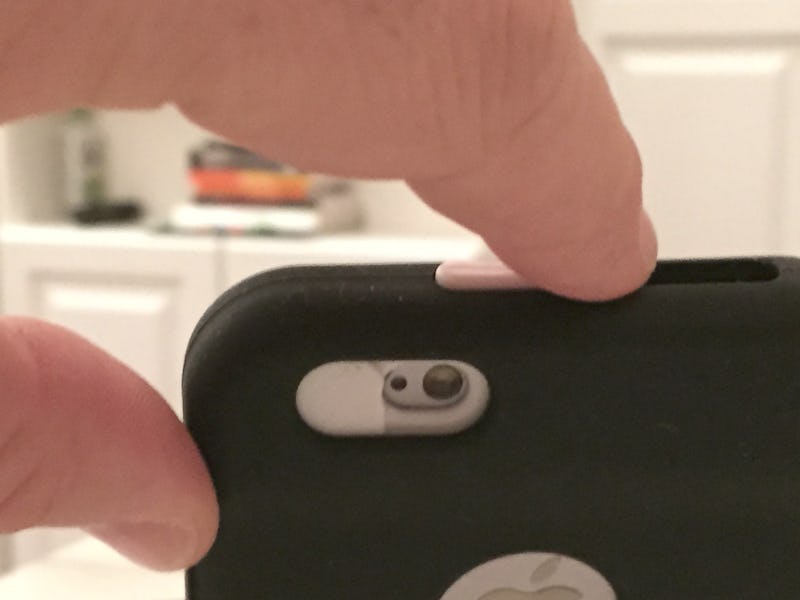Cover Your iPhone Camera With More Than Tape
The EyePatch Case adds security for the photographer and the paranoid.

Two years ago, television news reporter Michael Sorrentino was covering a story that changed the way he thought about technology.
An IT worker in Pennsylvania was hacking school-issued laptops and watching children. It was an eye-opening moment for the community: Everyone Sorrentino knew at the time started putting tape over their laptop cameras.
But there’s another camera people carry with them at all times: the one on their smartphone.
In March of 2014, camera security made it onto shock-jock Howard Stern’s radio show.
“I jerk off with my iPad and I’ve been reading about how they’re using these cameras in the computers to spy on people,” Stern said on the air. “Well guess what I do: I put a piece of tape over it when I’m jerking off.”
Sorrentino, who was already interested in device security, thought there must be some type of case that covered the camera. He did his research and couldn’t find any, so he solved the problem with his own invention: the EyePatch Case.
“It’s a very simple solution to a complex problem,” Sorrentino said when he called in to Stern’s show in July 2014. “What it does is a flick of the switch and you’ll cover your front and rear cameras completely.”
Security at the flip of a switch.
“In a perfect world, we wouldn’t need to sell these things,” Sorrentino tells Inverse. “We want our devices to be easy to use, but you have to put thought and time into your security, otherwise you’re exposing yourself to every possible violation on your privacy that you could possibly think of.”
The EyePatch is a physical solution to a digital problem. People can hack a phone, but they can’t hack a piece of plastic, and Sorrentino says the market for added security is only going to grow.
You can't hack a piece of plastic.
Sharyn Alfonsi, a CBS reporter, witnessed firsthand how easy it is for hackers to access a phone camera. She offered up herself and her devices for a 60 Minutes story on hacking, and her phone camera became a major issue.
“The hackers were able to exploit a hole in the global cellular network and get into our phones, turn on our cameras, listen to us, and all they needed for that was a phone number,” Alfonsi says.
End-to-end encryption can only do so much. Realistically, the majority of people don’t exclusively use encrypted software, and the response to the Edward Snowden leaks proved just how blasé the general public is to privacy. But taking extra steps to protect privacy isn’t paranoia, Sorrentino says, it’s peace of mind.
“It should honestly be as common on cellphone cases as the zipper is on jeans,” Sorrentino said.
However, the EyePatch isn’t just for privacy buffs. The sliding cover protects the glass in front of the camera, and it has a piece of felt that cleans the lens every time it slides over it. The way Sorrentino sees it, there are two markets for his product: the privacy conscious, and the “phonetographers” interested in keeping their phone camera in pristine condition.
If privacy concerns don’t inspire the iPhone-carrying population to cover up their cameras, maybe the quest for the perfect selfie will.